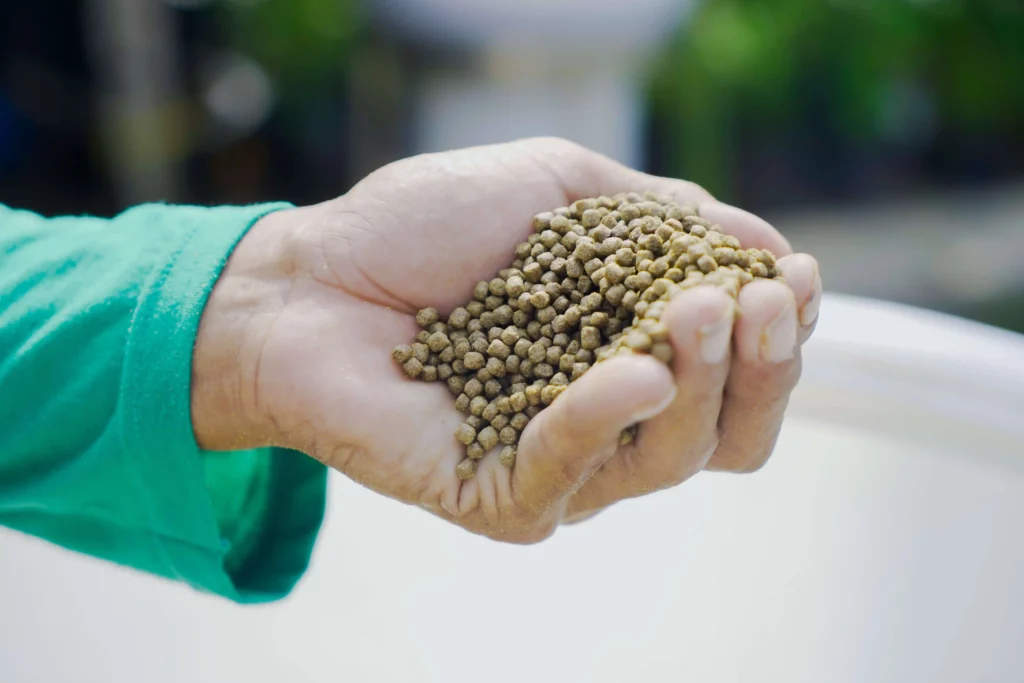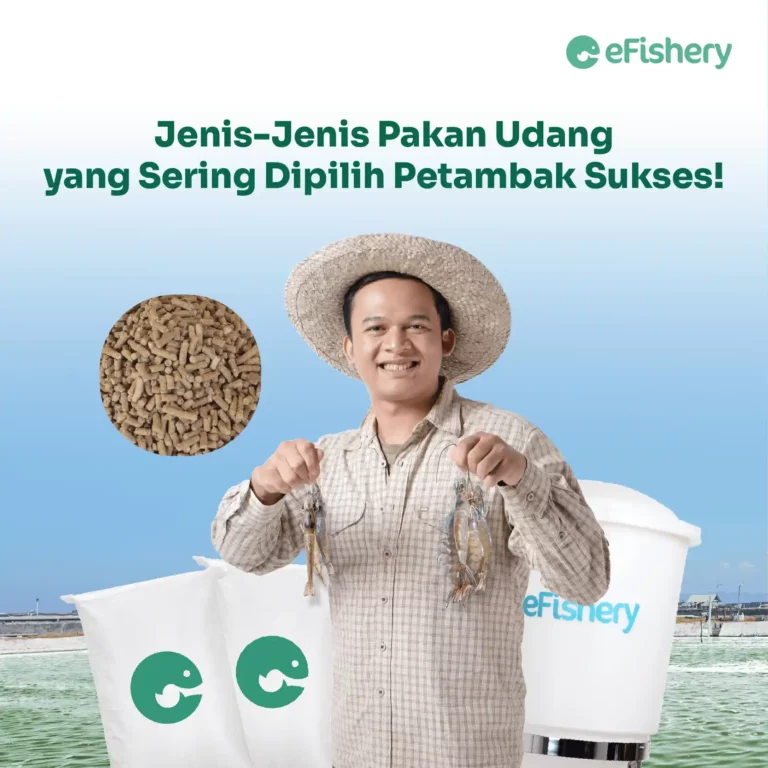Hello, Shrimp Farmers! It is undeniable that shrimp farming is a bright business opportunity for Indonesian farmers. Not only is the shrimp export target getting higher, the local market demand for quality shrimp is also getting bigger. Shrimp farmers in Indonesia are also competing and trying to develop their business. One of the ways that shrimp farmers can improve the quality and quantity of shrimp production is through feed management and choosing the right type of shrimp feed for their cultivation.
Before you can choose, you need to know all the types of shrimp feed that are usually chosen for the aquaculture business. Let's review together!
Types of Shrimp Feed
Based on the type, there are 2 types of shrimp feed that you can choose for cultivation, namely natural feed and artificial feed. Both are made from different ingredients and contain different nutrients, so the impact on shrimp growth is different. This feed is usually given to various types of shrimp, including vannamei shrimp feed.
In general, shrimp need the following nutrients to grow optimally:
- Proteins
- Lipids
- Carbohydrate
- Mineral
- Vitamin
These five nutrients must be balanced and sufficient so that the shrimp can grow quickly. Let's review the various types of shrimp feed for shrimp farming!
Natural Feed for Shrimp
Natural feed is a feed ingredient taken from living organisms. The shape and condition are still like the situation in nature. Natural food can be divided into 2 groups, namely animal (zooplankton) and vegetable plankton (phytoplankton).
Both contain high fiber which is good for shrimp digestion, especially at the hatchery stage. That is why this natural food is usually consumed by shrimp when they are still in the zoea stage or the shrimp larval stage.
However, not all types of plankton can be used as natural food for shrimp. Therefore, the type of plankton that is bred must be adapted to the conditions and needs of the larvae.
Not only that, the quality of the plankton must be good and well maintained. Examples of natural feeds that you can use for cultivation are Skeletonema costatum, Tetraselmis chuii, Chaetoceros calcitrans, Chaetocerros muelleri, Thalasiosira sp., and Artemia salina.
Price is one of the advantages of using natural feed. Natural feed is relatively cheap compared to artificial feed. Natural food is also easy to digest, has a complete nutritional content, and the level of pond water pollution is low.
However, natural feed is relatively difficult to find on the market and requires quite a long preparation time to suit your needs. Not only that, the use of natural feed can increase the risk of disease, so farmers must be more vigilant.
Artificial Feed for Shrimp
Artificial feed is feed made from a mixture of natural ingredients and processed ingredients that have certain nutritional content. The content of this type of feed can be adjusted as needed and can be made in a certain shape so that the aroused shrimp eat easily and voraciously. Artificial feed is a very important part of shrimp farming, especially in the nursery and rearing processes.
The form of feed given must be adjusted to the mouth opening, body size, and developmental phase of the shrimp so that the shrimp grow more optimally. Shrimp development phases are phases starter, grower, And finisher. For these three phases, the type of artificial feed given is different.
1. Feed mesh (Flour)
Feed mesh is a very fine flour-shaped feed, suitable for shrimp with a small mouth opening and a digestive system that is not so strong. This feed is given in phases starter when the shrimp is still fry under the age of 15 days.
2. Feed Crumble (Granule)
Feed crumbles has a larger size than the feed mesh. This feed is given at the enlargement stage (grower) when the shrimp were 16-45 days old.
3. Feed Pellets

Feed pellets has a larger size than the feed crumbles. This feed has a more complex nutritional content, making it suitable for maximizing shrimp growth until harvest time. This type of feed is given to shrimp aged 46-120 days or until harvest time.
The drawback of artificial feed is that it is relatively expensive, so 60-70% of cultivation capital can be spent on feed. In addition, the use of artificial feed can reduce water quality more quickly, so farmers must regularly check and maintain their pond water.
However, artificial feed remains the mainstay of farmers when it comes to growing shrimp because it is easy to obtain and its nutritional content can be adjusted according to the needs of each individual's cultivation. Not only that, the use of artificial feed also reduces the risk of disease transmission in shrimp.
Measuring & Method of Stocking Shrimp Feed
There are three methods of spreading feed commonly used by Farmers, viz blind feeding, demand feeding, And feeding regimen.
1. Blind Feeding
Performed in the first month (DOC 0-30) of shrimp farming. In this method, there is no feed checking using anco. The amount of feed is determined based on the number of fry, the increase in shrimp weight (ABW), the target Survival Rate (SR), and targets Feeding Rate (FR).
2. Demand Feeding
It is carried out from the 2nd month or after the first shrimp weight sampling until the harvest. In this method, you need to use anco to check the amount of feed eaten by the shrimp. If the feed in the anco runs out, then the amount of feed needs to be added. If there is leftover feed in the anco, then the amount of feed needs to be reduced.
3. Feeding Regimes
Feeding regimes is the determination of the amount of feed per day (P/H) or feeds per day (F/D) based Feeding Rate (FR). Feeding rate is the feed requirement per day based on the biomass and weight of the shrimp. FR value is determined from the size of the shrimp. The bigger the shrimp, the smaller the FR. Formula Feeding Rate are as follows:
Feeding Rate (FR) = Feed/Day (in kg) : Biomass (in kg) x 100%
Sukses Budidaya Udang dengan eFarm
Kini budidaya udang vaname akan jadi lebih mudah dengan eFishery. eFishery merupakan aplikasi andalan para petambak karena memiliki banyak fitur dan produk yang dapat mendukung keberhasilan budidaya udang Bapak/Ibu. Salah satunya adalah fitur Cultivation Consultation yang memberikan akses untuk berkonsultasi dan berdiskusi langsung dengan ahli budidaya.
Isi form di bawah dan downloads application eFarm untuk mendapatkan banyak manfaatnya!
Need Help Regarding Shrimp Cultivation Business?
Fill in your personal data in the following form. Our team will immediately contact you via the number cellphone attached. Make sure the data entered is correct.
